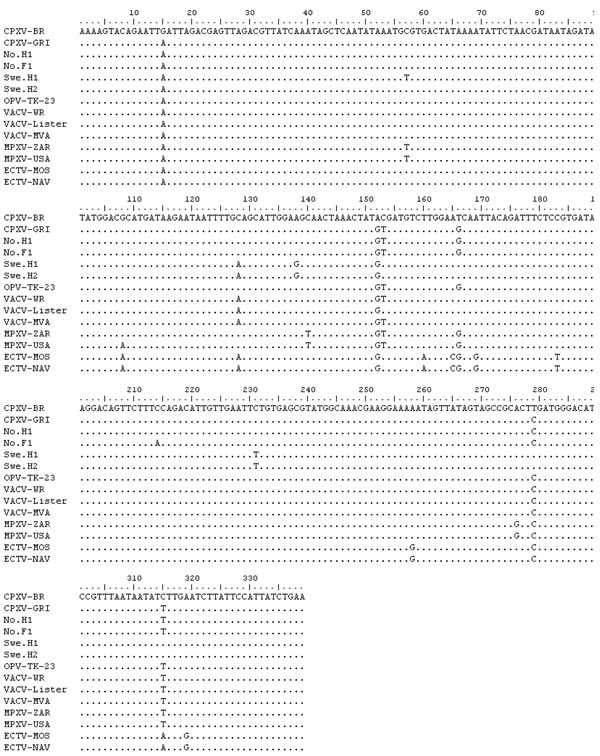Volume 17, Number 4—April 2011
Research
Orthopoxvirus DNA in Eurasian Lynx, Sweden
Figure 2

Figure 2. Multiple sequence alignment of the partial thymidine kinase (tk) gene obtained from Eurasian lynx (Lynx lynx) compared with the tk gene from other orthopoxviruses (OPVs). OPV-TK-23 represents all 21 sequences obtained from lynx tissues because they had 100% sequence homology. Swe.H1 and Swe.H2 represent 2 cowpox virus isolates from persons in Sweden. No.H1 and No.F1 represent cowpox virus isolates from a human and a felid, in Norway, respectively.
Page created: July 25, 2011
Page updated: July 25, 2011
Page reviewed: July 25, 2011
The conclusions, findings, and opinions expressed by authors contributing to this journal do not necessarily reflect the official position of the U.S. Department of Health and Human Services, the Public Health Service, the Centers for Disease Control and Prevention, or the authors' affiliated institutions. Use of trade names is for identification only and does not imply endorsement by any of the groups named above.